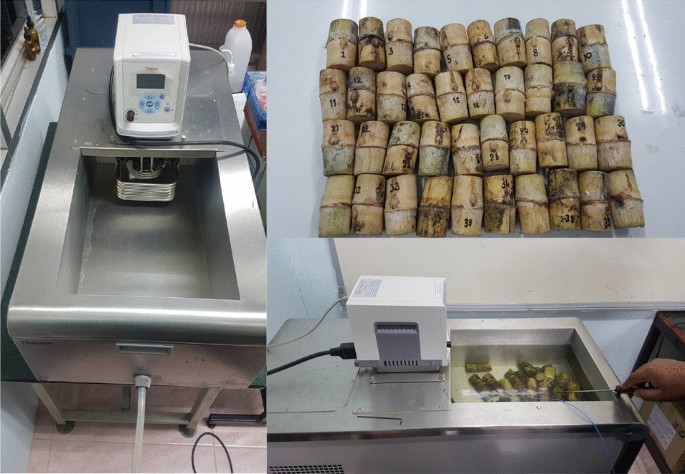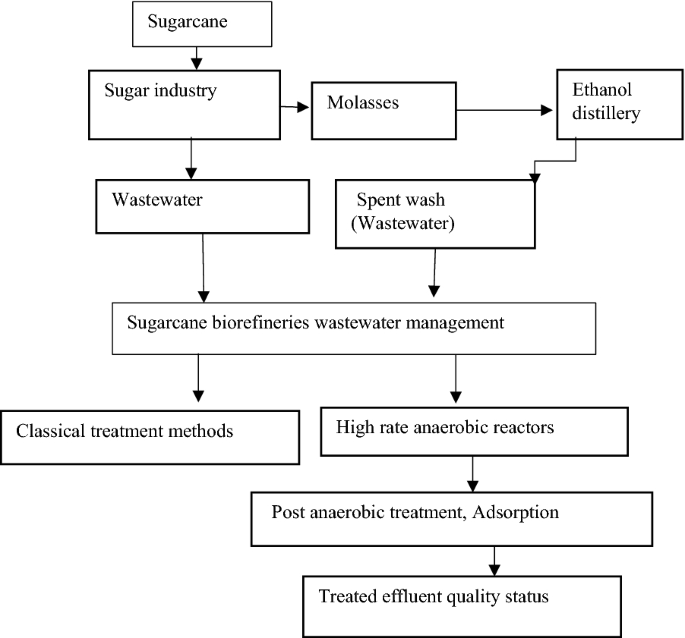Unlocking the Possible of Products From Sugarcane: a Comprehensive Overview
The capacity of sugarcane prolongs much past its standard usage for sugar production. This guide explores the diverse applications of sugarcane, from power and biodegradable products to wellness items. By analyzing its journey from field to factory, it exposes exactly how lasting practices can change waste into valuable resources. As industries seek environmentally friendly solutions, the question stays: how can these technologies reshape our technique to farming and manufacturing?

The Journey of Sugarcane: From Field to Manufacturing facility
Sugarcane undertakes an interesting improvement as it takes a trip from lavish areas to bustling manufacturing facilities. In the fields, the high, eco-friendly stalks are harvested, normally by mechanical methods or manual work. As soon as reduced, the sugarcane is swiftly carried to refining facilities to assure optimum quality. At the manufacturing facility, the initial step entails squashing the cane to extract the sweet juice, which contains sucrose. Products From Sugarcane. This juice is then filtered and cleared up, removing impurities. Following this, it undergoes evaporation to concentrate the sugar content, causing condensation. The resulting sugar crystals are divided from the continuing to be molasses via centrifugation. Lastly, the sugar is dried out and packaged for distribution. Throughout this journey, maintaining top quality and efficiency is crucial, as the techniques used straight effect the product's final quality. This makeover not just highlights the agricultural value of sugarcane but also its substantial function in the worldwide economy
Sugar and Its By-products: Greater Than Simply Sweet taste
The change of sugarcane into polished sugar opens up the door to a wide array of items and applications that expand beyond mere sweetness. Sugar and its by-products, such as molasses, brownish sugar, and glucose, play essential roles in different sectors, consisting of food, drugs, and cosmetics. In the food sector, these components boost tastes, improve appearance, and function as preservatives.Molasses, a by-product of sugar manufacturing, is rich in nutrients, making it a valuable ingredient in organic food and animal feed. Glucose, a simple sugar derived from sugarcane, works as a considerable power resource in sporting activities nourishment and is essential in the manufacturing of confectionery. In addition, sugar by-products are used in fermentation processes, contributing to the manufacture of liquors and various other microbial items. On the whole, the versatility of sugar and its derivatives highlights their value beyond mere sweet taste in day-to-day life.
Biofuels: Harnessing Power From Sugarcane

A considerable part of global biofuel manufacturing currently depends on sugarcane, acknowledged for its high energy yield and performance in converting sunshine right into biomass. This tropical crop functions as a key resource for ethanol, a renewable fuel that can replace gasoline in cars. Sugarcane's capability to create even more ethanol per hectare than various other feedstocks, such as corn, adds to its boosting appeal amongst biofuel producers.The fermentation process of sugarcane juice or molasses produces ethanol, which can be combined with nonrenewable fuel sources to lower greenhouse gas emissions. Additionally, by making use of the recurring bagasse from sugarcane processing, power can be produced with burning, more improving the sustainability of biofuel manufacturing. As countries seek to mitigate climate change influences, sugarcane biofuels use an encouraging remedy, reinforcing energy security and advertising farming sustainability while supporting rural economic situations.
Biodegradable Plastics: The Lasting Different
How can markets shift to more lasting techniques when faced with growing plastic contamination? One promising option exists in biodegradable plastics derived from sugarcane. Unlike standard petroleum-based plastics, these bioplastics use a green alternative that can greatly minimize environmental effect. Made from eco-friendly sources, sugarcane-based plastics break down more swiftly in different conditions, lessening garbage dump accumulation and marine debris.The manufacturing of naturally degradable plastics not only addresses waste management challenges however additionally lines up with the raising customer need for lasting items. Industries adopting these materials can boost their brand photo while adding to a circular economy. Additionally, the change to naturally degradable options motivates advancement and financial investment in brand-new modern technologies, cultivating a greener market landscape.As a lot more business identify the benefits of sugarcane-derived plastics, the potential for prevalent fostering boosts, leading the way for a much more sustainable future in packaging and item layout.
Pet Feed and Fertilizers: Using By-products
The by-products of sugarcane processing hold considerable potential for both pet nourishment and natural plant foods. These results can be included into animal feed, supplying important nutrients while decreasing waste. In addition, they can act as reliable organic fertilizer options, improving soil wellness and advertising sustainable farming practices.
Byproducts in Animal Nutrition
While sugarcane is largely valued for its sucrose content, its get redirected here results play an important role in pet nourishment, particularly in the type of animal feed and plant foods. The fibrous residue recognized as bagasse, created during the extraction of juice, serves as a useful source of roughage for animals. This high-fiber material improves digestion and advertises total health in ruminants. In addition, molasses, a by-product of sugar refining, is abundant in energy and can be utilized to supplement pet diet regimens, enhancing palatability and nutritional value. Vinasse, a fluid result from ethanol production, contains essential nutrients and can be utilized as a feed additive. In general, sugarcane by-products contribute significantly to lasting animal nutrition methods.
Organic Plant Food Options
Using sugarcane by-products extends past animal nourishment to incorporate natural plant food choices that profit farming methods. The coarse residues, such as bagasse and filter cake, offer as reliable organic plant foods, enhancing dirt health and boosting crop returns. These materials are rich in nutrients, consisting of nitrogen, phosphorus, and potassium, essential for plant growth. When decomposed, they improve dirt framework, water retention, and microbial activity, promoting a sustainable farming environment. Furthermore, utilizing sugarcane byproducts for fertilization reduces dependence on artificial fertilizers, advertising eco-friendly agricultural approaches. By recycling these by-products, farmers can add to a circular economic situation while enhancing their efficiency and minimizing waste. This technique exemplifies ingenious strategies in lasting farming, leveraging sugarcane's full potential.
Health and wellness and Wellness: Nutritional Conveniences of Sugarcane
Many studies highlight the nutritional advantages of sugarcane, making it a beneficial addition to a well balanced diet. Rich in necessary nutrients, sugarcane consists of significant quantities of minerals, carbs, and vitamins, especially vitamin Potassium, calcium, and c. These elements add to overall health, supporting immune feature and bone strength.Moreover, sugarcane is a natural resource of anti-oxidants, which help battle oxidative stress and inflammation in the body. Its high fiber web content aids in food digestion, advertising digestive tract health and avoiding constipation. In addition, sugarcane juice has been linked to hydration and energy replenishment, making it a superb selection for athletes or those participating in laborious activities.Furthermore, the glycemic index of sugarcane is fairly reduced, allowing for a more steady release of energy, which may be beneficial for individuals handling blood glucose degrees. Overall, incorporating sugarcane right into one's diet plan can offer a revitalizing and nourishing choice for health-conscious people.
Developments in Sugarcane Products: Future Trends and Opportunities
What advancements lie ahead for sugarcane items as industries seek to boost sustainability and customer charm? The future of sugarcane products is poised for significant developments, driven by the demand for green choices. Innovations in bio-based packaging, derived from sugarcane, are acquiring grip, offering a sustainable alternative to conventional plastics. Furthermore, the exploration of sugarcane's bioactive compounds is most likely to result in brand-new health supplements and functional foods, profiting from its natural benefits.Research into fermentation processes may generate unique biofuels, better diversifying sugarcane's energy. Furthermore, the growth of genetically modified sugarcane selections promises increased yields and resistance to bugs, thereby sustaining lasting farming techniques. As customers end up being much more ecologically aware, the combination of transparency in sourcing and production methods will likewise play an important duty fit the future of sugarcane items. Ultimately, these developments might redefine sugarcane's placement in worldwide markets.
Often Asked Inquiries
What Are the Ecological Impacts of Sugarcane Farming?
The environmental influences of sugarcane farming include logging, loss of biodiversity, soil deterioration, and water air pollution - Products From Sugarcane. Additionally, extreme chemical and plant food use can harm ecological communities, while monoculture methods may cause decreased resilience versus environment change

How Is Sugarcane Processed Into Different Products?
Sugarcane handling includes harvesting, squashing, and drawing out juice, which is after that clarified and concentrated. The resulting syrup can be fermented for ethanol or crystallized for sugar, while fibers are made use of for bioenergy and various other products.

Exist Any Wellness Risks Related To Sugarcane Usage?
The my link question of wellness threats associated with sugarcane intake highlights problems such as too much sugar consumption, potential allergic reactions, and stomach problems. Small amounts is necessary to minimize these threats while appreciating its nutritional advantages.
What Are the Economic Benefits of Sugarcane Farming?
The financial advantages of sugarcane cultivation consist of task development, enhanced agricultural performance, and contributions to neighborhood economies. Additionally, it sustains eco-friendly check out here energy production and offers various by-products that can enhance success within diverse markets.
How Does Sugarcane Contrast to Other Renewable Resources?
Sugarcane, as a renewable energy, demonstrates higher effectiveness in biomass production contrasted to numerous alternatives. Its convenience allows for various results, contributing especially to sustainable practices, economic growth, and decreasing reliance on nonrenewable fuel sources. Sugar, an easy sugar obtained from sugarcane, serves as a significant power source in sporting activities nourishment and is important in the production of confectionery. Sugarcane's ability to produce even more ethanol per hectare than various other feedstocks, such as corn, adds to its boosting popularity among biofuel producers.The fermentation process of sugarcane juice or molasses produces ethanol, which can be combined with fossil gas to minimize greenhouse gas exhausts. Furthermore, sugarcane juice has been linked to hydration and power replenishment, making it a superb choice for professional athletes or those engaging in exhausting activities.Furthermore, the glycemic index of sugarcane is reasonably reduced, enabling for an extra steady launch of power, which might be useful for people taking care of blood sugar levels. In addition, the expedition of sugarcane's bioactive substances is most likely to lead to brand-new wellness supplements and functional foods, exploiting on its all-natural benefits.Research right into fermentation processes might yield unique biofuels, additionally expanding sugarcane's energy. The question of health and wellness risks connected with sugarcane consumption highlights concerns such as excessive sugar intake, potential allergic reactions, and gastrointestinal concerns.